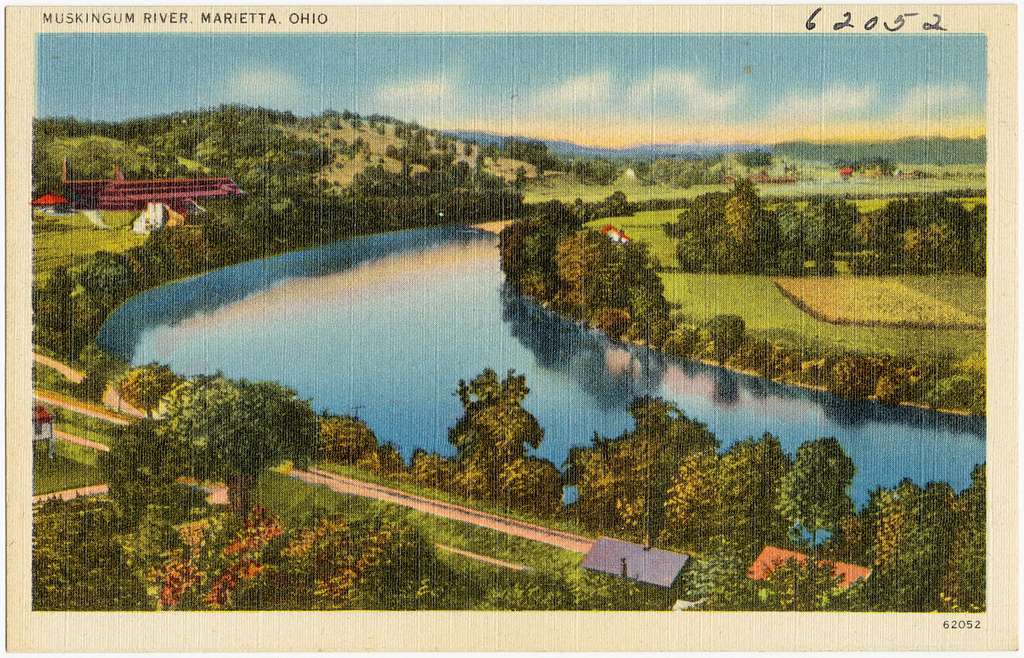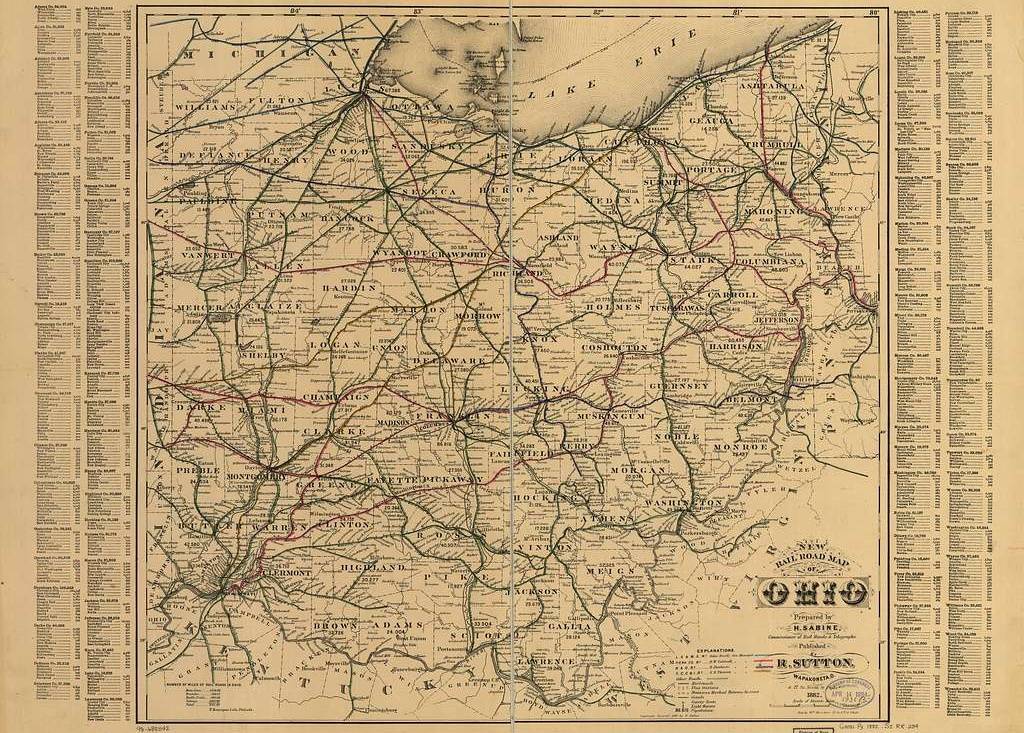Dublin, Ohio (a suburb of Columbus) was named, or so the story goes, by an Irishman named John Sheilds at some point around 1810, which may explain why Dublin has the largest number of Asian citizens in the State of Ohio. Or maybe not. I don’t always understand these demographic things. It also, however, boasts that it has the largest three-day Irish festival anywhere in the world.
Dublin’s origins were a bit humble. By 1833, the community featured little more than a couple of mills and a general store. By 1880 it had grown large enough to incorporate, and by 1970 it had progressed enough to call itself an actual town. By then, the population was a little over 600. But, all that was about to change with the construction of a single road.
Well, that “road” just happened to be Interstate 270, an auxiliary Interstate Highway that circled Columbus, which made Dublin a lot easier to get to. There wasn’t much there yet, but it did feature the state’s first Single-point urban interchange, that traffic engineers tell me is actually a pretty big deal. Anyway, because of the interstate, a couple of major corporations started eyeing Dublin for their new headquarters including Wendy’s (the fast food restaurant chain) and Ashland, Incorporated.
Our next stop on this historical journey brings us to the mid 1990s, but before we get there, we’re going to have to pause for just a moment and talk about something (or, someone) else.
Sam Frantz
In 1939, Dublin was still a small, incorporated community, Sam Frzntz lived there with his wife, Eulalia. I would call them farmers, but technically they were a wee bit more than that. Sam was a well-known conservationist, and he had a thing for corn. And by “thing” I meant that he tried to come up with new breeds of corn.
Apparently breeding corn is a bit more than just getting two ears of corn together with a copy of the Kama Sutra and letting nature take its course. Supposedly it’s a tedious scientific process and once you’ve come up with a new type of corn, it has to be put into the ground somewhere and allowed to grow. It’s also important to keep this new breed of corn away from other breeds of corn, to prevent any potential contamination.
That is why Sam took over a small corner of land near the present-day intersection of Frantz (how odd that he chose a road that would eventually be renamed after him) and Rings Roads … which he used to test his corn hybrids.

He also planted a row of Osage Orange Trees along the edge of his testing area. One scientist I spoke to suggested this may have been a further measure to ward off contamination, especially if the trees were planted down-wind – but this is Ohio where the wind can blow from any direction, so I have no clue. Maybe the guy just liked to have a snack while he watched his corn grow.
Sam’s corny experiments worked well, from what I hear, as he was able to come up with several new types of corn. How those corns are different from the ones Aunt Irma has on her feet, I have no clue.
By the time the 1940s roll around, Sam’s corn experiments are coming to an end, and he is left with a bit of a dilemma: what’s he going to do with his experimental cornfield? He comes to realize that Columbus is growing and growing and little farm towns like Dublin are eventually going to be swallowed up by the city (or the suburbs). This doesn’t seem like such a good idea to Sam, so he comes up with another plan.
Sam gifts that small parcel of land to the city, with the provision that nobody is going to build a house or business on it. Dublin accepts the land, and it soon becomes the Sam and Eulalia Frantz Park, a decent size grassy area with a row of Osage Orange Trees.
It would stay that way until the middle of the 1990s, when someone came up with another idea.
The Field of Corn
The Dublin Arts Council commissioned some “public art” to be sculpted by Malcolm Cochran with landscaping by Stephen Drown and James Hiss … and when the people of Dublin heard something about rows of concrete corn filling the park, skepticism was the word of the day. To a lot of people, it was a horrible idea.
Once it was erected in 1994, it quickly became a joke … if not a target for scorn for those concerned over the use of Public Funds for such “art”. David Guion, leader of the Dublin Arts Counsel responded to the critics by saying that art is supposed to inspire an emotional response, “and the Field of Corn has certainly done just that.”
Even though the official name for the artwork is “Field of Corn” most of the locals began referring to it as something else: Cornhenge.
The art consists of 109 pieces of concrete shaped like ears of corn, standing on their edge in a dozen rows (each row has somewhere between 1 and 20 ears of concrete corn). According to the sculptor, white concrete laid out in rows was intended to resemble the white crosses of Arlington National Cemetery. He also said it was an homage to the agricultural way of life, as opposed to corporate offices and housing developments. That may also explain why a second row of Osage Orange Trees were planted alongside the first as an official part of the installation.
As for me … if I don’t understand it, it has to be art.
Over time, the hatred over the art installation began to dwindle and by 2002, Field of Corn (aka Cornhenge) was listed among the “Best of Columbus” by the readers of Columbus Monthly, and most years have it listed as the #1 Best art installation anywhere in town.
If you visit today, you can walk among the rows of concrete corn, or even read the five plaques that were erected that depict the history of the land that now forms the park (going all the way back to the native tribes that lived in the region.)
It’s also free to enjoy, so you don’t have an excuse not to.



